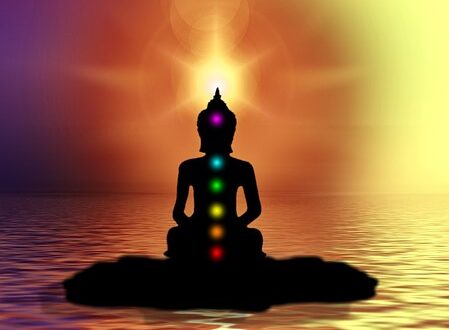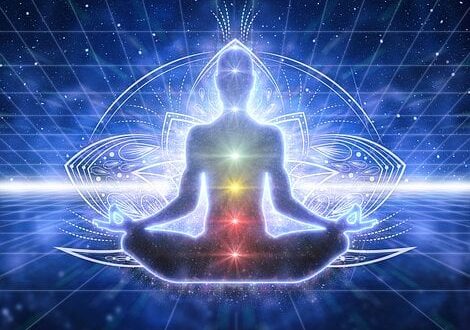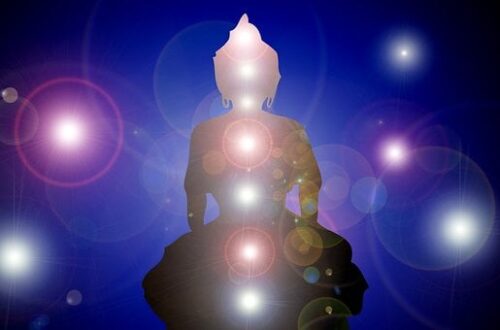
What is aura? Aura vision training
Surely more than once each of us has heard the colloquial expression about good and bad auras. But what is this aura and can it actually be sensed? And if so, is it an innate skill and can it be learned?
What is an aura?
According to various dictionaries, the aura is the energy that flows through the body and we can observe it in the form of a colorful glow surrounding us. The concept of aura was already known in ancient times. It was from the ancient Greek language that the word aura, meaning a breeze, a blast, originated. It has a similar meaning in Latin. Depending on the interpretation, it is understood as a reflection of a person’s past and future, an electromagnetic phenomenon or a reflection of our mood, emotions and thoughts. Aura is also often called bioplasma, human energy field, or biofield. It is sometimes equated with the halo surrounding the heads of saints or the glow surrounding them, which can often be seen in Christian iconographies.
When interpreting the aura, one should pay attention not only to its colors, but also to its appearance and condition (a sad person will have a shrunken aura, while the aura in a person living under the influence of a regime will be damaged and stifled).
The ability to read auras allows us to get to know people better – to judge their intentions, emotional state, to see what we can’t see with the “naked eye”.
So how to learn to sense auras and interpret them?
There are many exercises for sensing auras. However, for beginners, the most important will be the basic techniques to sense the aura of color. Two exercises that allow you to sense different types of auras over time are key. Regardless of the technique one wants to use to read auras, one must remember to relax and concentrate.
Basic technique
To begin the aura sensing exercises, you need the right light. It must not be too strong and reflective to the eyes. Ideally, the light source should be located behind your back slightly above you.
The next steps of the exercise:
– take an object (for example, a book) and wrap it with colored paper in a light color, blue or red. It should be placed at a distance of about 2 meters away (a different distance will be suitable for everyone, so experiment, but remember that the distance from the object must not be less than 1.2 meters). The object must be set on a background of a neutral color, for example, dark beige, such as wrapping paper (the background must not be multicolored or have a very light shade);
– now close your eyes and take a few deep breaths – relax. Once you have reached a state of relaxation, you should look towards the book, directing your gaze slightly beside and behind it. It is important not to focus your eyes on the book itself or on the wall behind it. Concentration is needed, but one must not exert one’s eyesight. We should direct our gaze slightly to the side, away from the point on which we would normally focus our eyes.

Notes:
– the purpose of the exercise is to observe the aura of a color, not the aura of a book, so for the exercise you can choose another object wrapped in colored paper or an object in the previously mentioned colors (it is important that it is uniform);
– the auras of the colors red and blue are the easiest to see;
– it is important to use only bright, basic colors for the first attempts;
– blinking should not be stopped during the exercise, as it can cause burning and tearing of the eyes. Natural blinking, on which we will not focus our attention, will only cause the aura to disappear temporarily, but it will reappear very quickly.
Brow center opening technique (opening the third eye)
This exercise is designed to focus the body’s awareness at the site of the eyebrow center. With proper work, the third eye begins to open, making it much easier to read the aura. Over time, when we are sufficiently relaxed, spontaneous perception of the aura can occur (especially when there is an object in the field of vision, but one is not looking directly at it).
How to open the third eye?
– You should focus your attention on the spot between the eyes, slightly above them. Initially, scratching or touching this spot may be a good way to help you focus. You should concentrate so that you are aware of this spot. The important thing is that everything is done mentally, you can’t put physical effort into the exercise, tense the muscles in this place;
– mentally you should try to lift this place (the same way you lift your eyelids). One must imagine heavy eyelids, which should be allowed to close. After this comes the time to open them. While lifting the eyelids, we should observe which muscles are working and repeat this action several times. Do not forget that everything must be done mentally. The muscles must not be tensed. Such an action is difficult at first, so this activity should be repeated very often and with time it will become easier.
– This exercise is important because it is the first step in learning to control the third eye, but also the energy of the whole body;
– stimulating the eyebrow center makes it active and open to the energy of the observed object, which is sent to the eye center, where it is interpreted as a bright, colored band of light surrounding the object.
Having mastered these two techniques, one can move on to exercises that allow one to sense a person’s aura. These exercises are an exciting adventure that allows you to see the world in a completely different “light.” Initially, seeing with the third eye – the mind’s eye – allows you to see still simple images, which over time turn into vibrant colorful visions that enable you to get to know yourself and the world around you better.



